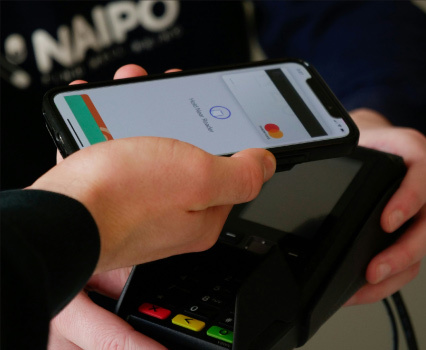Unpacking Mexico’s Direct Carrier Billing Boom: Market Size, Drivers & Future Trends

Recent developments in digital payments have become a key trend in transforming the digital economy in emerging markets. The growth in Direct Calling Bill (DCB) has been substantial in Mexico, with approximately 78.73 million smartphone users in 2023, which represents about 61.5% of the country’s population. This increase in the number of smartphone users facilitates the adoption of mobile payment solutions like DCB, which allows people to make purchases directly from their mobile phones. Mexico presents a significant growth opportunity for DCB, driven by the high mobile phone penetration in the Mexican DCB market and a substantial portion of the population that remains unbanked. According to data, approximately 51% of the adult population in Mexico doesn’t own a bank account, leaving around 66 million people without access to traditional banking services. This unbanked population, combined with a high smartphone penetration rate, indicates how DCB can expand by introducing financial inclusion, which will cater to both of these population segments.
What Is Direct Carrier Billing (DCB)?
Direct Calling Bill is an online payment method that allows users to make purchases billed to their mobile operator account. The best part of this application, which makes it particularly relevant for the Mexican population, is that it is not only applicable to smartphone users but also to feature phone users. Additionally, the person doesn’t necessarily need a bank account to make payments through this application. This payment method is easily accessible, seamless (in-app or digital purchases), and secure.
Current Market Size & Growth Projections
The DCB market in Mexico was valued at $157 million in 2023 and is projected to grow at a CAGR of 13.7%, reaching $370 million. This growth in DCB usage indicates a strong uptake from customers, suggesting an increase in trust in mobile payments and a favorable macroeconomic environment for DCB growth in the Mexican market. It is noticeable that there has been a rise in the adoption of digital media in the Mexican market. The use of subscription-based services, such as music platforms, video streaming services, and gaming platforms, also helps increase the adoption of DCB as a mode of payment.
What’s Driving Adoption? Key Consumer & Market Forces
The major behavioral and market trends that are enabling a fast DCB adoption are:
• Mobile-first consumers: Smartphones have now become a primary digital device for Mexican customers.
• Financial Inclusion Gaps: A significant portion of the population still lacks access to a bank account, so these customers prefer non-banking payment options that are trustworthy and seamless.
• Convenience: DCB is a very convenient form of payment, as customers don’t need to enter any card details or create additional accounts. This is a one-click payment method that appeals mainly to younger users, who often lack access to credit cards and may not even own a bank account.
• Trust: This is a more trustworthy payment option, as making payments through well-established and recognized mobile operators fosters a sense of trust and confidence, even in small to medium-value transactions.
How DCB Is Being Used in Mexico: Changing Digital Habits
DCB has quietly woven itself as a trusted payment option among Mexican Consumers. The DCB system initially aimed to simplify online payments, but it has since evolved into a broader ecosystem of digital consumption. Now, DCB is used for basically any online service that requires ease of payment and immediacy. This is now being used for paying for cloud storage, subscription services, and music platforms. The younger generation in Mexico prefers payment methods that don’t hinder their online experience and are convenient to use, especially those that don't require a bank account or registration. With the rapid expansion of digital payments in Mexico, using carrier billing as the default for small recurring payments or impulsive purchases has reinforced its role in the mobile-first lifestyle prevalent in the country.
The Competitive Landscape: Telecoms + Fintech Partnerships
Mexican telecom operators have enhanced their billing systems to increase transaction reliability. On the other hand, global and regional payment enablers are partnering with these telecom operators to localize the DCB experience for Mexican customers. Content providers and subscription services have now begun to view DCB as an essential payment method in Mexico, and companies are competing to provide the most seamless carrier payment experience, rather than focusing on the DCB payment method itself.
Challenges That Still Need Solving
Despite its fast adoption and preference among Mexican customers, DCB faces its own challenges. The major challenge is adoption in higher-priced transactions, as carrier billing is limited to low and medium-value purchases. Regulations also play an essential role, as a rapid increase in digital services, telecom standards, and billing rules necessitates keeping up the pace to maintain consumer confidence.
Conclusion: DCB as a Catalyst for Digital Inclusion
In a market with a high mobile penetration rate and where millions still operate outside traditional banking services, DCB offers a bridge to the digital economy for normal people. The convenience and reach provided by DCB as a payment method has enabled a larger participation in Mexico’s digital world. In the future, the role of DCB will only deepen, whereby offering payment services to businesses and consumers alike, they will create a more accessible and inclusive experience.